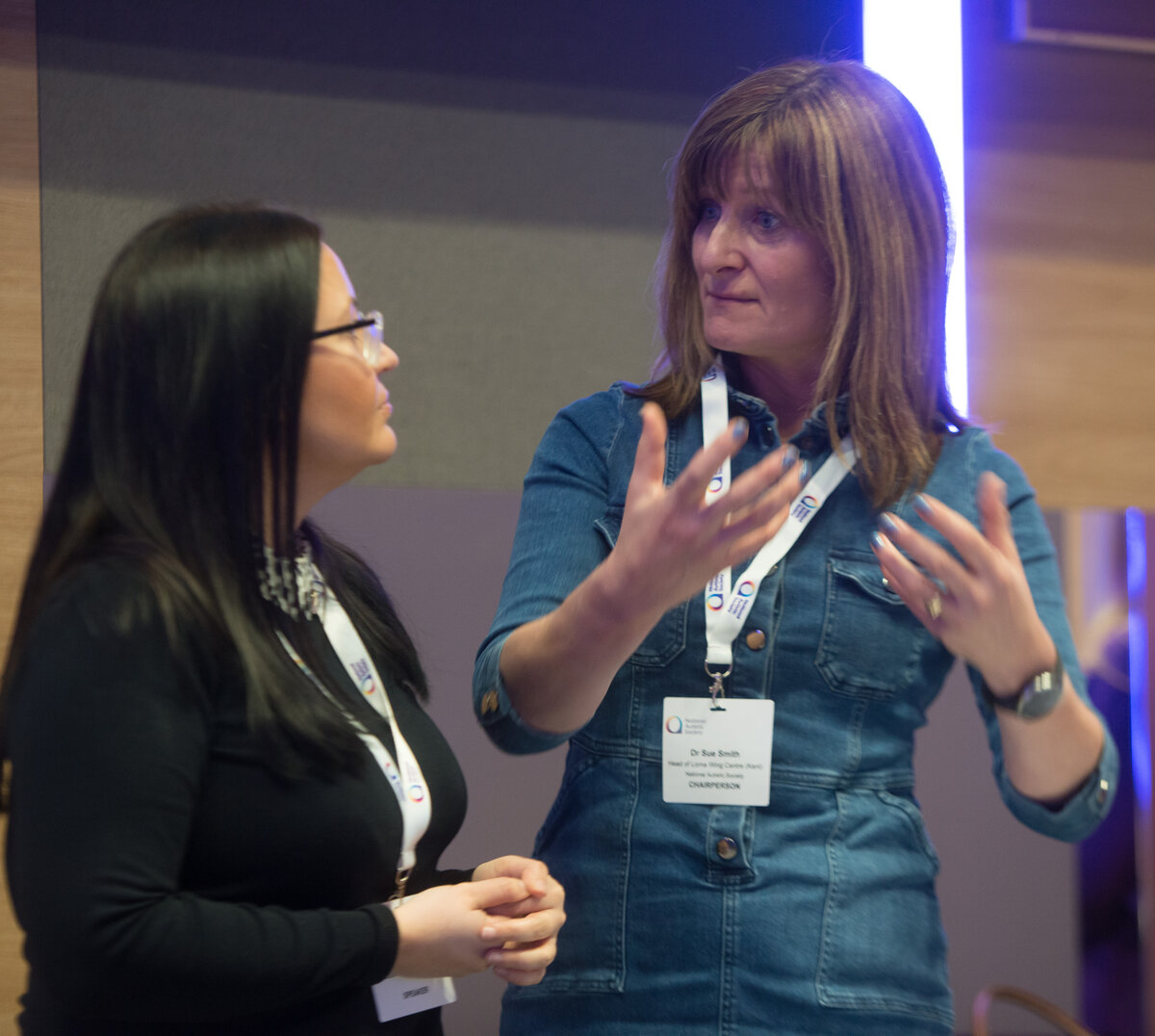Autism and catastrophising
Published on 22 November 2017
Author: Lorraine MacAlister
Lorraine MacAlister is an Autism Training Consultant at the National Autistic Society (NAS). In this article, she explains what catastrophising is, why autistic people may be prone to it and support options.
“Catastrophising is when you are anxious about a situation and that anxiety leads your brain to ruminate on a potentially disastrous outcome.”
(Purple Ella, The Autism Show, 2017)
Anxiety
I’d like to think that it’s now widely understood that many autistic people, both children and adults across the spectrum, experience high levels of stress and anxiety. Everyday activities, such as the breakfast cereal being different, leaving the house or spending time with other people can be a cause of anxiety for autistic people.
This can result in a build-up of stress, leaving them in a constant state of hyper-arousal, often referred to as being in the ‘fight or flight’ mode. This state of hyper-arousal can lead to autistic people experiencing meltdowns or shutdowns as a result of being completely overwhelmed.
Several autistic people have talked of experiencing alexithymia (a diminished vocabulary to describe the different levels of emotional experience). If you don’t have the words to describe how you’re feeling, it’s then really hard to understand it.
What is catastrophising?
Because of this high state of anxiety, many autistic people find that their brain goes straight to worst case scenario in a variety of situations. This is known as catastrophising.
“It’s when your manager taps you on the shoulder saying they need a word – and your brain goes straight to I’m going to lose my job”
“It’s when your friend doesn’t reply to a text straight away and you then panic you’ve done something wrong and she’s never going to want to speak to you again”
Catastrophising means having negative thoughts that can spiral extremely fast, to leave you with only the worst case scenario. To the outside world, it might seem like an illogical leap, but when you break it down, it is often not a totally implausible scenario – although it may be highly unlikely.
Purple Ella shared an example at the Autism Show 2017:
“I’ve been known to enjoy a takeaway, and within minutes of clearing away the dishes, start to worry about the cleanliness of the kitchen in which it was prepared. Then I start to worry about the potential of the chef having some kind of gastrointestinal illness. I will seriously start to worry about whether I may be about to develop food poisoning. Next, I will start to research the particularly food I ate, the likelihood of poisoning from that food and how long onset of symptoms will take to develop.
I have even been known to research the restaurant to investigate whether there have been any report of food poisoning online. So my nice treat has turned into a medical crisis – even though I don’t actually have any symptoms.”
Negative past experiences
Alongside high levels of anxiety which can make autistic people prone to catastrophic thinking, they can also be influenced by past experiences. If a person has struggled with friendships due to not understanding social rules, or found school difficult because of experiencing meltdowns, , they are more likely to go straight to a negative conclusion based on these experiences.
Jennifer Cook O’Toole explains catastrophising in her book The asperkid’s secret book of social rules (2013) as:
“Mentally going from zero to Mach 100 in no seconds flat…NT’s would call it overreacting...but I find that infuriating.”
How to help
A key point in supporting an individual who has a tendency to catastrophise is to take it seriously and recognise that just telling them ‘not to worry’ will not stop the catastrophising.
A vital first step for autistic people in managing catastrophising is to focus on reducing stress and anxiety.
Mindfulness can be hugely beneficial, and there is a variety of activities and apps which can help with this. Purple Ella would highly recommend the Headspace App.
Energy accounting is a concept from Maya Toudal, and is based on the premise that everyday activities and tasks can be a real energy drain on autistic people, potentially causing high stress levels. Autistic people need to take time and build relaxation into their day activities to replenish this energy.
Developing self-understanding about their own tendency to catastrophise can be an important step towards managing it. Friends, family and colleagues could try to avoid being a trigger for catastrophising by:
- Making adjustments by using clear and direct communication with autistic people, to help avoid the individual going straight to worst case scenario.
- Examining the chain of catastrophe by breaking down the scenario in a flowchart style and looking at why the worst case scenario might not happen.
- Trying to remove emotion and look at the facts, alongside using key sentence such as ‘are there any actions I can take to reduce the likelihood of the negative outcome?’ This is an approach that the autistic person may be able to use on their own or do alongside someone who knows them well.
It is important to also recognise that the autistic person might need support post-catastrophising:
“I need to try and not hate myself for catastrophising…to stop beating myself up for doing it, it's part of me, it’s a part I don’t like, but it’s a part I'm aware of and can aim to control in later episodes”
(Rachel Townson, 2017)
It can be helpful to work on boosting self-esteem. If people feel better about themselves and have more positive experiences, they are often less likely to catastrophise. A person who catastrophises needs to know that they are not alone, and it is vital that they give themselves time to recover afterwards.













